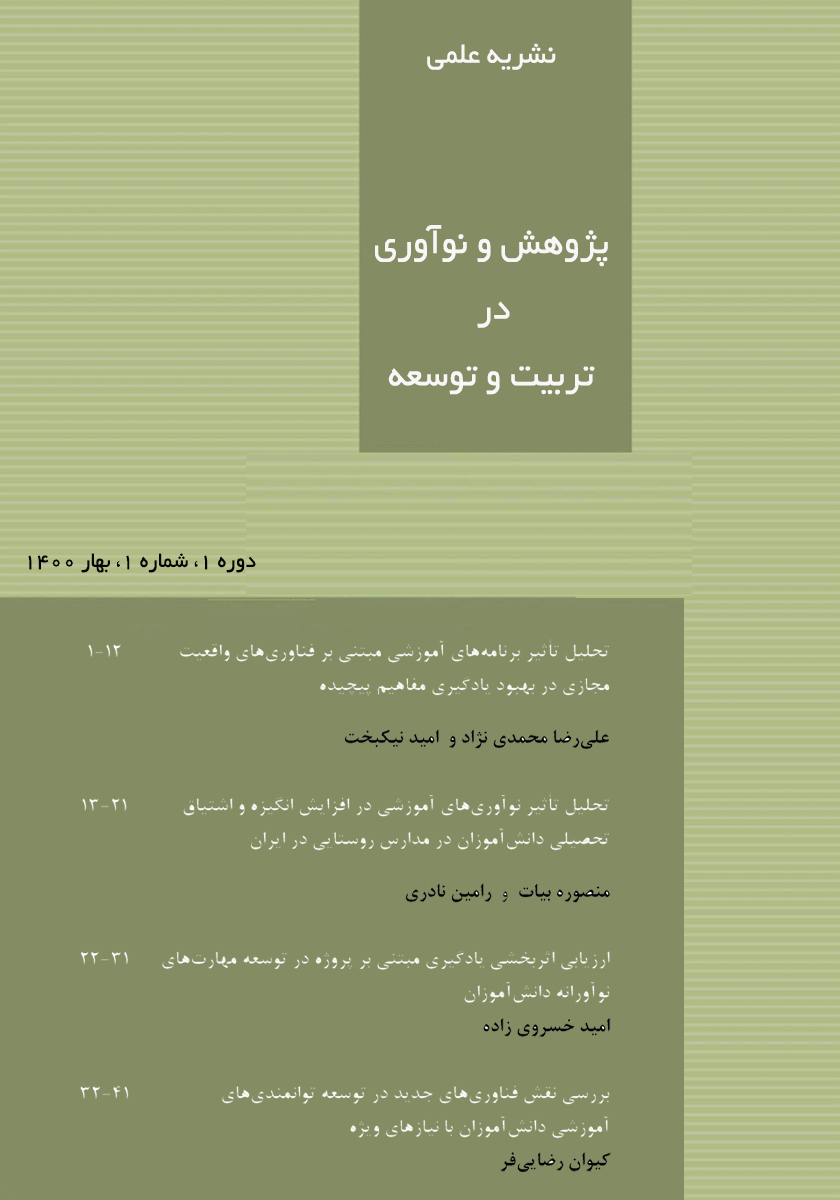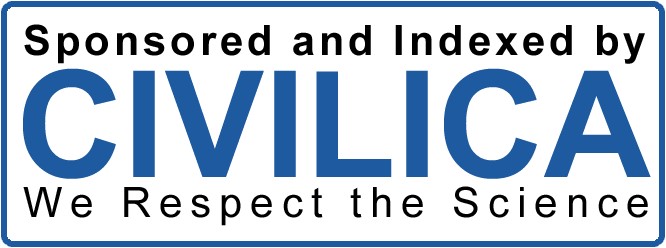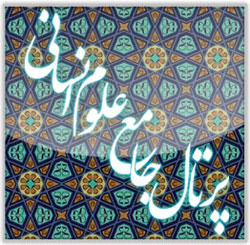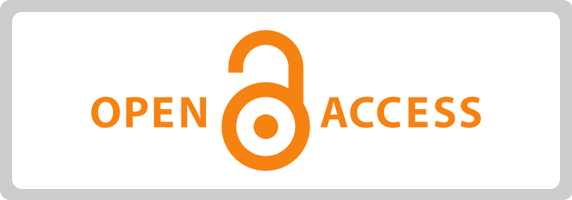اعتبارسنجی الگوی فساد آموزشی در دانشگاهها
کلمات کلیدی:
فساد, فساد آموزشی, آموزش عالی, اعتبارسنجیچکیده
فساد به طور کل و فساد آموزشی عامل مخل توسعه در ارکان مختلف جامعه است. هدف از پژوهش حاضر اعتبارسنجی الگوی فساد آموزشی در دانشگاهها بود. روش پژوهش حاضر کمی- پیمایشی و از نظر هدف کاربردی است. جامعه آماری شامل 384 تن از کارمندان دانشگاهها و موسسات آموزش عالی بودند که به صورت نمونهگیری تصادفی انتخاب شدند. ابزار پژوهش پرسشنامه محقق ساخته بر اساس یافتههای کیفی و ادبیات موضوع بود. برای تجزیه و تحلیل دادهها نیز از روش معادلات ساختاری با نرم افزار PLS Smart استفاده شد. یافتهها نشان داد در ارزیابی کمی مدل، تمام اعداد معنی داری، بزرگتر از 1.96 و ضرایب استاندارد بزرگتر از 0.4 حاصل شد و مدل مورد تایید قرار گرفت. با توجه به اینکه معیار برازش دادهها برابر 0.626 بدست آمد، برازش مدل نهایی تایید گردید. بر این اساس، ضریب تأثیر راهبردها بر پیامدها (90/0 و مقدار تی، 107/)، تأثیر شرایط زمینهای بر راهبردها (6/24 و مقدار تی، 7/4)، مقدار تأثیر شرایط مداخلهگر بر راهبردها (85/0 و مقدار تی، 1/46)، مقدار تأثیر عوامل علی بر پدیده محوری (4/93 و مقدار تی، 6/14) و مقدار تأثیر پدیده محوری بر راهبردها (714/0 و مقدار تی، 9/14) حاصل شد. میتوان نتیجه گرفت فساد موضوعی چند بعدی است که برنامهریزان نظام آموزش عالی باید بتوانند بر اساس نتایج تحقیقات مختلف و همین طور نتایج این پژوهش به شناسایی و علل دلایل آن تمرکز نموده تا بتوان آموزش عالی عاری از فساد را ایجاد و فراهم نمود.
دانلودها
مراجع
Bagherimajd K, Khajedad K, Mahmoudi F. Design of a model to reduce academic corruption in higher education.
International Journal of Ethics Education. 2024:1-25. doi: 10.1007/s40889-024-00197-x.
Heliany I, Asmadi E, Sitinjak H, Lubis AF. The Role Of Corruption Education In Combating Corruption Crimes In
The Future. JPH. 2023;10(2):11-22. doi: 10.26532/jph.v10i2.32344.
Waite D, Allen D. Corruption and abuse of power in education administration. The Urban Review. 2003;35:281-96.
doi: 10.1023/B:URRE.0000017531.73129.4f.
Rumyantseva NL. Taxonomy of corruption in higher education. Peabody Journal of Education. 2005;80(1):81-92.
doi: 10.1207/S15327930pje8001_5.
Nye JS. Corruption and political development: A cost-benefit analysis. American Political Science Review.
;61(2):417-27. doi: 10.2307/1953254.
Jin X, Bin F. Analysis of the reasons and countermeasures for academic corruption. Chinese Education & Society.
;40(6):95-105. doi: 10.2753/CED1061-1932400613.
Rafipour F. The social cancer of corruption. Tehran: Sohami Publishing; 2009.
Osipian AL. University autonomy in Ukraine: Higher education corruption and the state. Communist and PostCommunist Studies. 2017;50(3):233-43. doi: 10.1016/j.postcomstud.2017.06.004.
Hashemzadeh DH, Fazeli M, Mohadesi-Gilviee H. Measuring Academic Corruption: A Multi-dimentional Model.
Journal of Iranian Social Studies. 2016;10(4):116-48.
Sabic-El-Rayess A, Heyneman SP. Education and corruption. Education and Corruption2020.
Persists WC. Inequality, education, and corruption. The Oxford handbook of the quality of government2021. p. 427-
Denisova-Schmidt E. Introduction: Corruption in Higher Education: Global Challenges and Responses. Corruption
in Higher Education2020. p. 1-12.
Heyneman SP. Corruption in the education sector. Handbook on Corruption, Ethics and Integrity in Public
Administration. Edward Elgar Publishing2020. p. 129-38.
Silova I, Bray M. The hidden marketplace: Private tutoring in former socialist countries. Education in a hidden
marketplace: Monitoring of private tutoring2006. p. 71-98.
Yang R. Corruption in China's higher education: a malignant tumor. International Higher Education. 2005(39):18-9.
doi: 10.1080/10611932.2005.11031720.
Deliversky J. Preventing corruption in the education system. Journal of Educational and Instructional Studies in the
World. 2016;6(1):141-6.
Santizo Rodall CA, Martin CJ. School‐based management and citizen participation: lessons for public education from
local educational projects. Journal of Education Policy. 2009;24(3):317-33. doi: 10.1080/02680930802669268.
Danaifard H. Anti-Corruption Strategy: Does Information Technology Reduce Corruption? Management Research in
Iran. 2021;9(2):101-17.
Seifzadeh A. Investigating citizens' perception of administrative corruption and demographic variables affecting it
(case study: Birjand). Khorasan Social Cultural Studies. 2016;10(4):114-93.
Yun A. Corruption in Uzbek higher education: Detrimental impurity for the future. Central Asia Policy Briefs.
;34.
Mohammadian K, Salimi J, Azizi N, Mohamadi S. Structural roots of the occurrence of academic corruption in higher
education in Iran. Journal of Educational Sciences. 2020;27(2):159-82. doi: 10.22055/edus.2021.33499.3031.
Rabiei A. Long live Corruption (Political Sociology of Corruption in Third World Governments). Tehran: Printing
and Publishing Organization and Ministry of Culture and Islamic Guidance; 2003.
Atshak M, Ghahrani M, Abolghasemi M, Farastkhah M. The concept of administrative corruption in the public
education system. Ethics in Science and Technology. 2014;6(3):33-47.
Rashidi A, Raisi L. Corruption and Its Impact on Human Rights. Quarterly Journal of Social Development.
;11(4):237-54. doi: 10.22055/qjsd.2017.13013.

دانلود
چاپ شده
ارسال
بازنگری
پذیرش
شماره
نوع مقاله
مجوز
حق نشر 2024 نشریه پژوهش و نوآوری در تربیت و توسعه

این پروژه تحت مجوز بین المللی Creative Commons Attribution-NonCommercial 4.0 می باشد.










